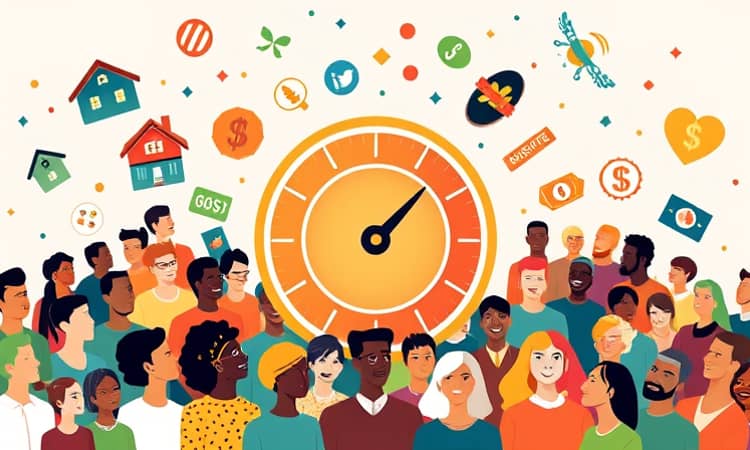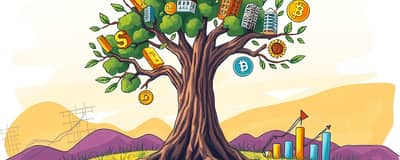Interest rates are more than abstract percentages—they shape every corner of our financial lives. From the mortgage on your home to the return on your savings, understanding how interest rates work empowers you to make proactive, informed choices that align with your goals.
In this article, we explore the mechanics of interest rates, their broader economic role, and practical strategies to navigate varying rate environments.
Understanding Interest Rates
At their core, interest rates represent the price of borrowing money or the reward for saving. Three common types include:
- Nominal rates: The stated or quoted rate, unadjusted for inflation.
- Real rates: The nominal rate minus inflation, reflecting true purchasing power.
- Effective rates: Incorporating compounding periods to show the true cost of borrowing.
For consumers, distinguishing between these rates clarifies when loans are truly affordable and whether savings are outpacing rising prices.
How Rates Are Determined
The Federal Reserve sets the federal funds rate, the benchmark guiding most U.S. lending and borrowing. The Fed adjusts this rate based on:
- Inflation expectations
- Economic growth and employment trends
- Global market conditions
- Credit supply and demand
As of March 2025, the target federal funds rate stands at 4.5%, its highest level since 2007. Analysts expect a gradual decline to 4.25% by mid-2025, 3.50% in 2026, and 3.25% in 2027.
The Cost of Borrowing
When rates rise, borrowing becomes more expensive. Key impacts include:
- Mortgages: Higher monthly payments can delay home purchases and cool the housing market.
- Credit cards and personal loans: Increased interest charges may force consumers to reprioritize spending.
- Auto loans: Elevated rates can stretch budgets and influence the timing of big-ticket buys.
Conversely, when rates fall, cheap credit incentivizes greater consumer spending and encourages businesses to invest in expansion.
Savings and Investment Implications
Savers benefit from high rates: certificates of deposit and money market accounts yield more, helping to outpace inflation. By contrast, low rates often push individuals toward riskier assets, chasing returns when bank products underperform.
For bond investors, rising rates mean new issues offer higher coupons, but existing bonds lose value. Equity markets typically dip during rate hikes, as borrowing costs weigh on company profits. When the Fed cuts rates, stock prices often rebound, fueled by renewed spending and investment.
Economic and Emotional Ripple Effects
The Fed’s dual mandate—to maintain price stability and employment—drives rate decisions. Higher rates help rein in inflation but can slow growth and dampen job creation.
Changing rates also affect consumer sentiment. Anticipation of rate cuts can spark optimism, encouraging spending even before official moves. Conversely, fears of tightening credit may prompt households to increase savings, further slowing economic activity.
Current Landscape and Forecasts
These forecasts suggest a slowly easing environment, but uncertainties around inflation and global markets mean flexibility remains key.
Practical Strategies for Personal Finance
Navigating shifting rates requires foresight and adaptability. Consider:
- Mortgage timing: Lock in a fixed rate during dips, or explore adjustable-rate options if you expect declines.
- Debt strategy: Accelerate repayment in high-rate periods; refinance when rates fall.
- Investment allocation: Balance bond and equity exposure based on rate trends and risk tolerance.
- Big purchase planning: Delay or expedite transactions to secure the most favorable financing.
Review your budget regularly and keep an eye on Fed announcements—informing decisions before rate shifts become reality.
Looking Ahead: Trends and Takeaways
Interest rates will continue to be a dynamic force in personal finance. Staying informed helps you:
- Seize borrowing opportunities when credit is inexpensive.
- Protect savings from inflation’s erosion.
- Adjust portfolios to capture income or growth based on market cycles.
As economist Greg McBride notes, “The Federal Reserve’s interest-rate decisions have a wide-ranging influence on Americans’ personal finances, affecting their job security, financing costs and the direction of the economy.”
Conclusion
Interest rates touch every aspect of financial life. By understanding how rates are set, anticipating their direction, and applying strategic planning, you gain control over your borrowing costs, savings returns, and investment outcomes. Embrace this knowledge to make informed financial decisions that support your long-term goals.
References
- https://www.fultonbank.com/Education-Center/Saving-and-Budgeting/4-ways-higher-interest-rates-impact-your-finances
- https://www.wintrust.com/financial-education/2022/09/fed-interest-rate-changes-how-does-this-impact-your-personal-finances.html
- https://www.bakertilly.com/insights/interest-rates-and-their-impact-on-financial-services-companies
- https://www.investopedia.com/articles/stocks/09/how-interest-rates-affect-markets.asp
- https://www.bankrate.com/banking/federal-reserve/how-federal-reserve-impacts-your-money/
- https://tradingeconomics.com/united-states/interest-rate
- https://www.investopedia.com/articles/investing/082113/understanding-interest-rates-nominal-real-and-effective.asp
- https://www.jdkreps.com/understanding-interest-rates














